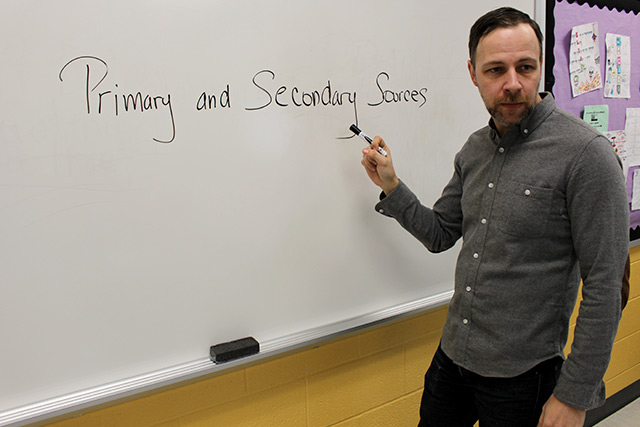Learn It
Identifying Great Sources
Mr. Lexington loves to talk about historical sources. In fact, he says good sources are the most important part of any project. He can tell you himself.
 “Creating a research project is like baking a cake. You have to start by gathering good ingredients.
“Creating a research project is like baking a cake. You have to start by gathering good ingredients.
Great primary and secondary sources are the ingredients to a great research project.”
Wait! Before we go on, let’s review what primary and secondary sources are.
A primary source is a piece of information about an event or time, made by someone who was part of the event or alive during that time. A letter to Harriet Tubman is a primary source.
A secondary source is made by someone who was not part of the event and did not see it happen. Historians and other experts make secondary sources after the event is over. A movie about Harriet Tubman is a secondary source.
Research Tip
Talking to someone who knows information about your research topic can count as a primary or a secondary source.
Interviews are like a question and answer session with an expert. For example, if the person you interview was part of the event, that person is a primary source. You could also interview an expert who studied the event, but was not alive when it happened. This is a secondary source.
You can arrange an expert interview for your research project in several ways:
- Do the interview in-person, or on the phone.
- Use messaging software (Facetime, Google Hangouts or Skype) to talk with the expert.
- Write email messages to each other.










